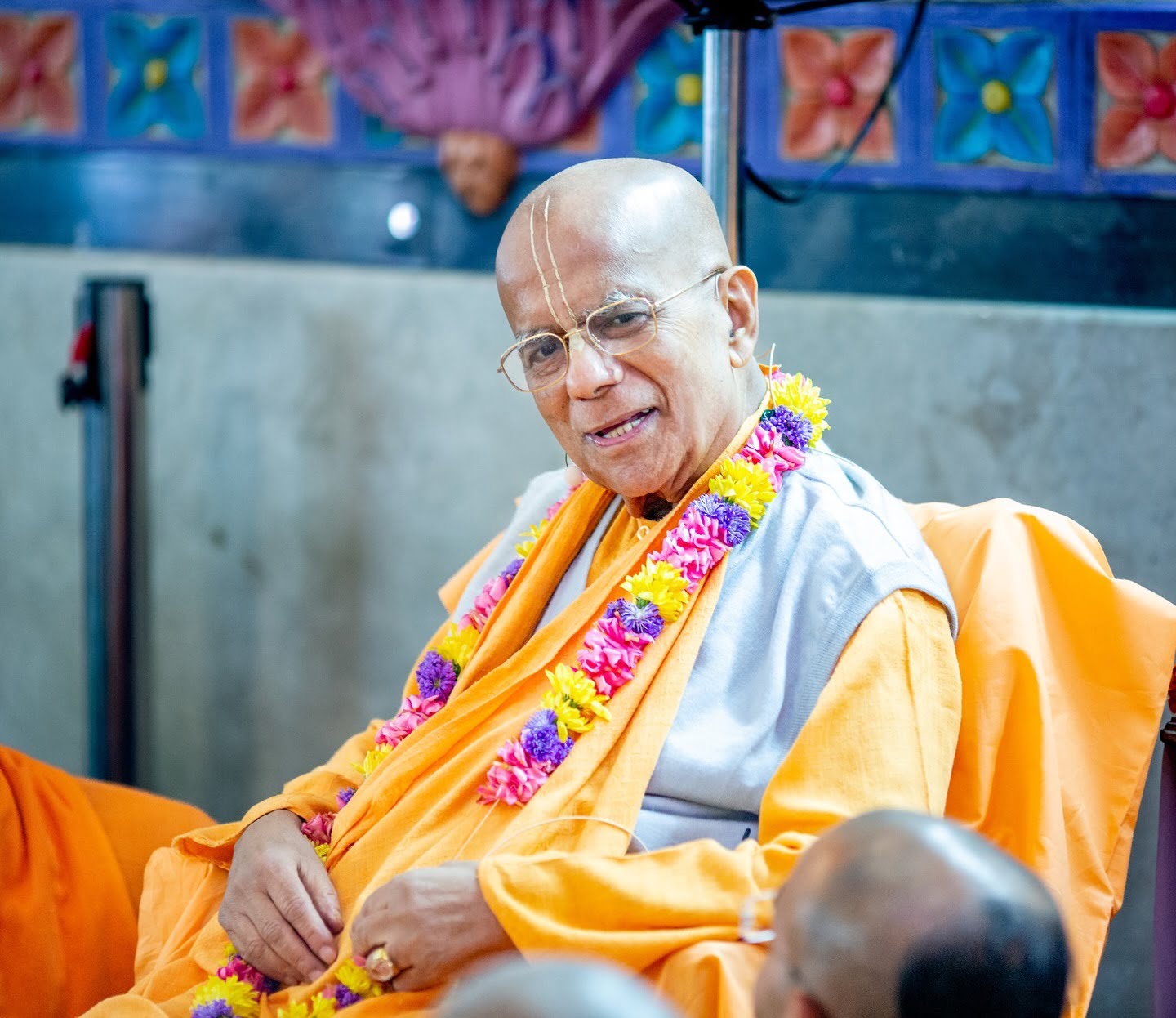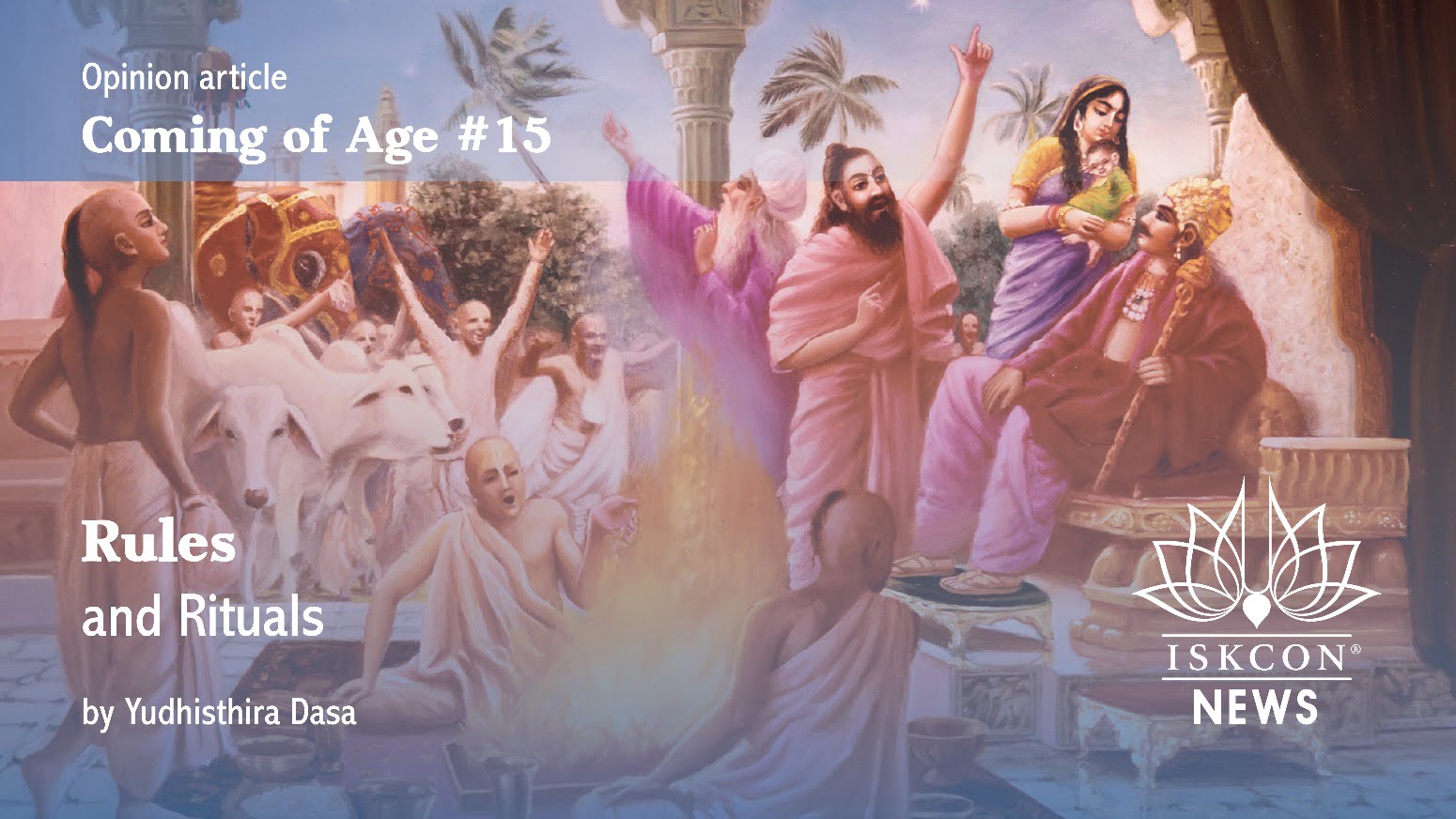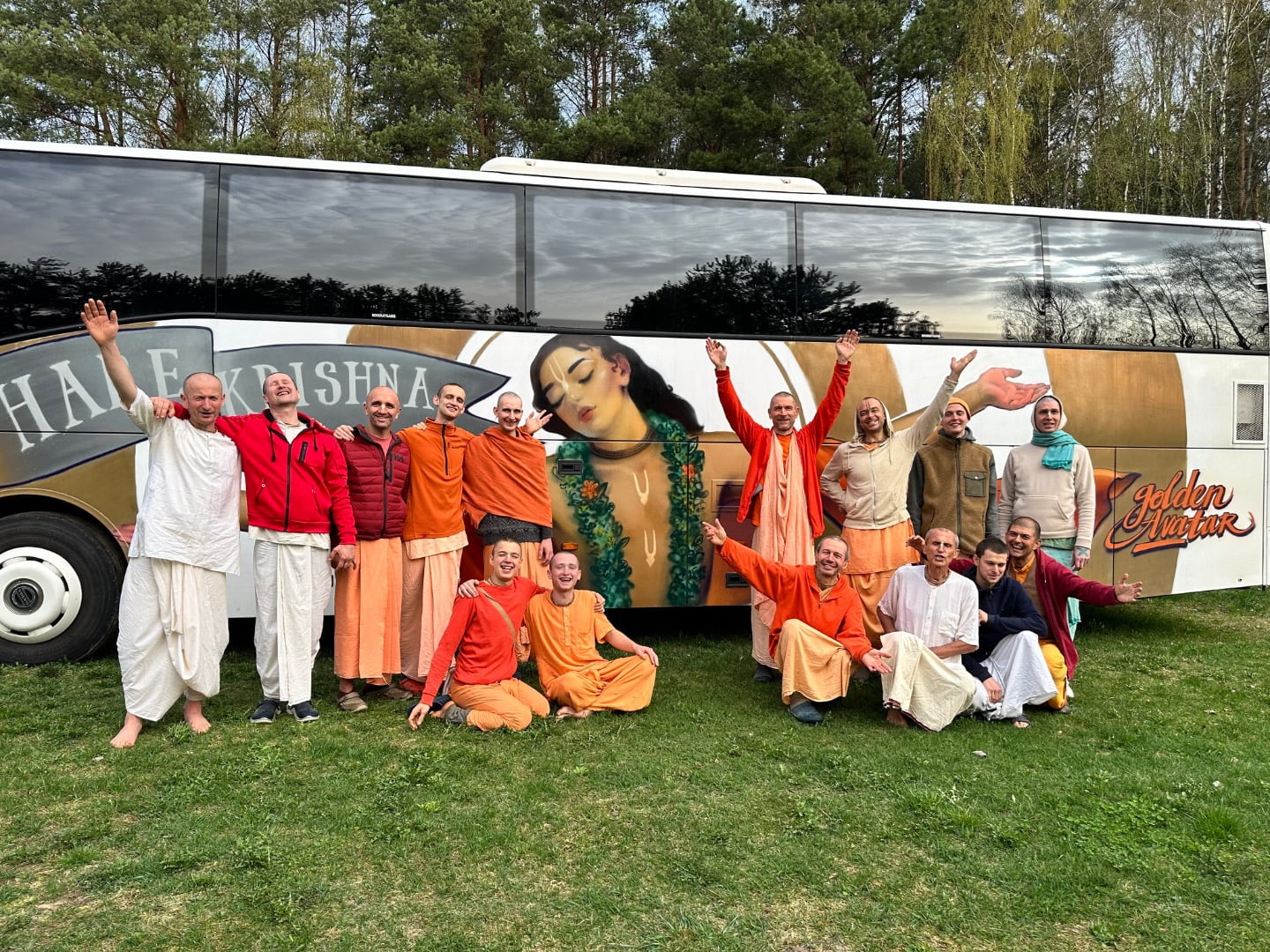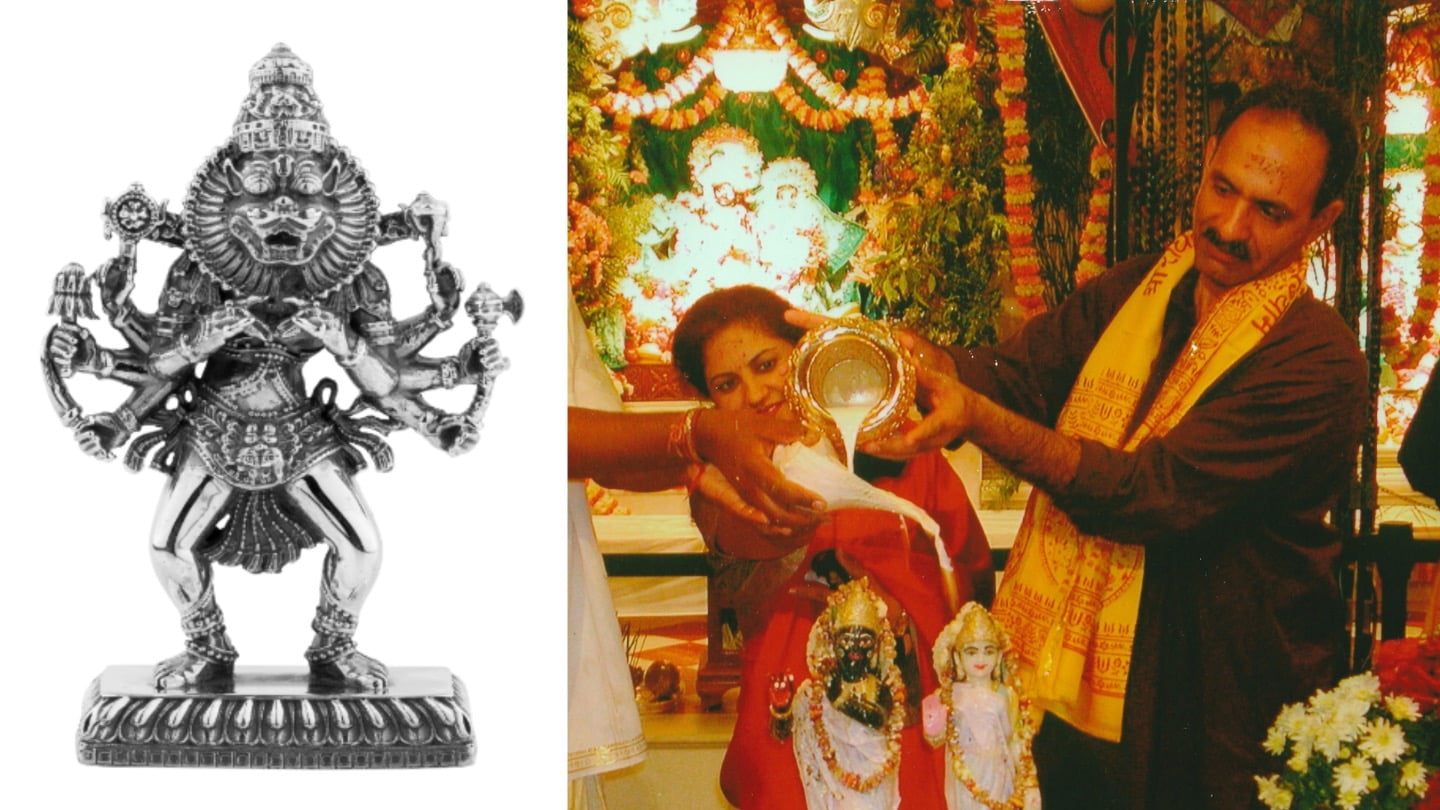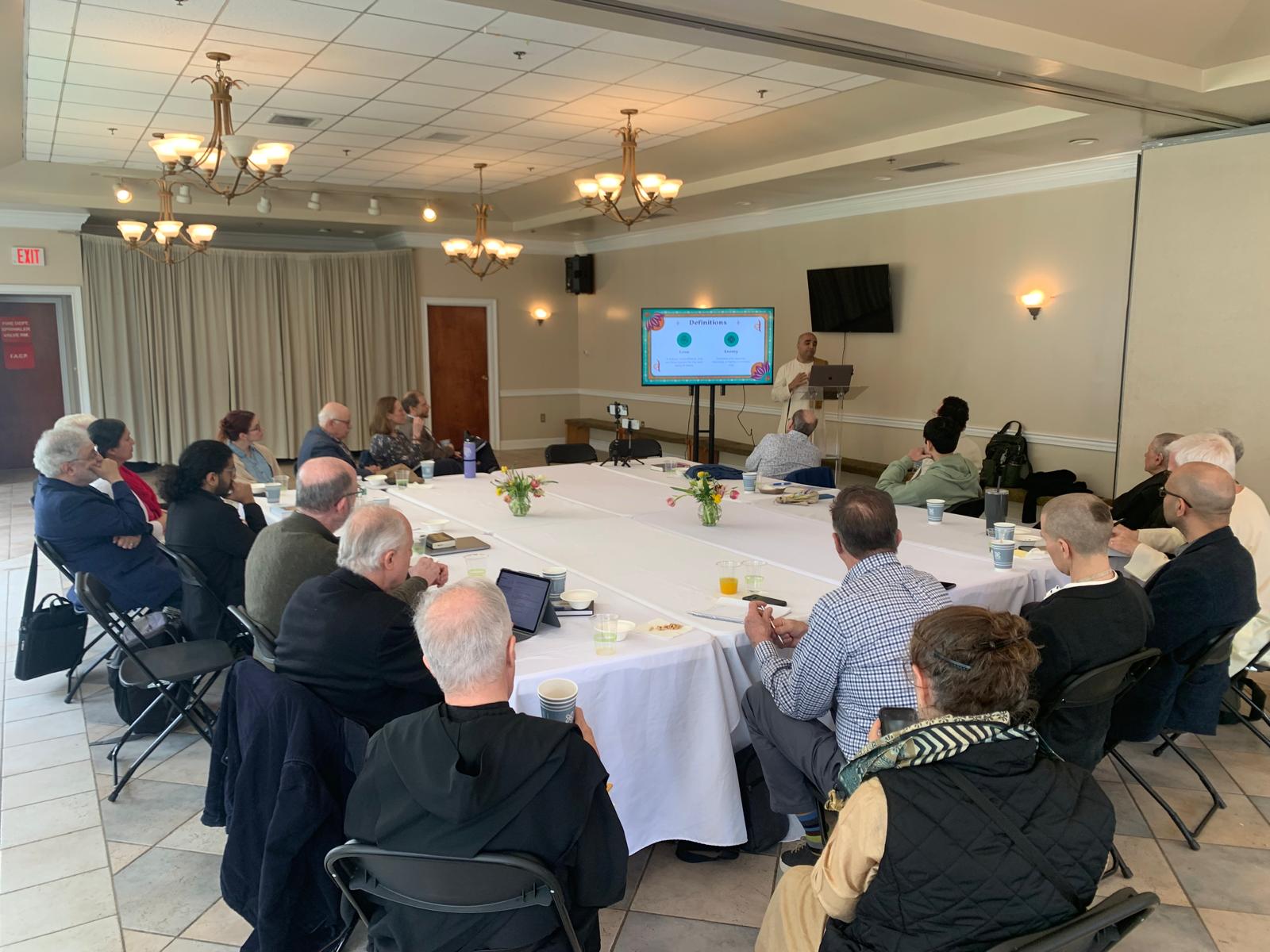ISKCON Utah Looks at Big Picture with “Llama Fest”
By Madhava Smullen | Jul 16, 2010
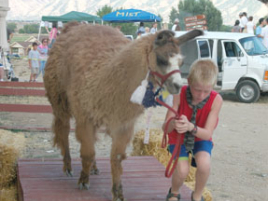
About 4,000 people will stream in through the gates of ISKCON Utah onto its spacious grounds this July 17th, to spend the afternoon in the shadow of the enormous Vedic temple with its fifty-foot dome. But they’ll be attending for possibly the last reason one might expect to visit a Hare Krishna temple—the 16th annual Llama Fest.
“Llama what now?” you might be forgiven for asking.
Temple president and innovative outreach organizer Charu Dasa explains. “Sometimes less is more,” he says. “ISKCON is often stereotyped as being a bunch of zealot proselytizers, so we wanted to show people that we could go for 24 hours with proselytizing. Llama Fest is a tongue-in-cheek, light-hearted, essentially secular event that provides neutral ground for a lot of people who wouldn’t feel comfortable coming to our spiritual festivals. People who, when they see this event, think: ‘Wow, the Hare Krishnas are alright—they’re normal, sane fellows with a good sense of humor, just like me!”
In their native Peru, Chile, and Bolivia, llamas are the trucks of the Andes, carrying heavy loads over terrain which is impassable to motorized vehicles. In America, where life is much easier, they have become popular for carrying camping gear on weekend hikes and day trips. Llama Fest highlights llamas and their owners in the overall cultural context of food, music, dance, spinning and weaving demonstrations, and entertaining competitions.
The event will kick off at 4pm with a show ring, wherein female llamas and their handlers will be judged on how well they work together, backed by live pan-flute-driven Andean music.
Next, children will be invited to lead the llamas through a twelve-obstacle course that involves passing through tunnels, stepping in and out of a trailer, and ducking. Upon completion, contestants will be judged on their performance and awarded ribbons for first, second, and third place to take home as souvenirs.
“What makes it entertaining is the various degrees of cooperation amongst the llamas,” Charu says. “Some glide through the obstacle course effortlessly, while others just plant their feet, resulting in a hilarious tug of war between the kid and the llama. All this time, of course, the kids’ parents and grandparents are wildly cheering them on from the audience.”
After a 300-yard all-out llama race, in which ribbons will again be awarded to the winners, the male llamas will emerge and participate in the same three events—show ring, obstacle course, and race.
Throughout all this, continuous live music and dance will be performed simultaneously on several outdoor stages. Folk band Alborada, vocal group Kausachun Peru, and contemporary Latin group Rhumba Rambo will provide the South American flavor, while The Glass Gentlemen and The Wiggins Brothers will deliver music with a more bluesy feel. Meanwhile Center Stage Performing Arts will perform folk dances from Peru, Bolivia and Chile.
There will also be plenty of activities—children will be able to go for llama rides or pet and feed their llama counterparts in a corral for baby llamas, known as crias. Adults can learn how to spin and weave the traditional Bolivian way, as well as the various uses to which llama and alpaca wool can be put. They can also browse through a selection of Andean craft items such as jewelry, rugs, shawls, carvings and clothing, and sample the South-American style sanctified prasadam food including chili, nachos, emphanadas, braised vegetables with fried curd, bread pudding, spicy wraps, and lemon mango fruit drinks.
Throughout the competition events, Charu does a running commentary, sharing his knowledge of llamas and how to care for them.
And he knows his stuff. It was all the way back in 1985 when ISKCON Utah devotees first purchased two llamas to carry their tents and packing as they explored the local canyons and nature trails. Soon, finding the creatures to be in high demand, they went into the breeding business, launching a lucrative source of income to support their Sri-Sri Radha-Krishna temple. They have since shifted to training and renting their herd of some forty llamas—who have become the premier packing llamas in Utah—out to hikers and adventurers.
Charu knows that there will be critics of both his managing a llama farm and holding a Llama Fest at an ISKCON temple, and he has answers ready.
“During the year, we get many elementary and primary school children coming here to feed and handle the llamas—it’s a huge draw for families,” he says. “And since we’ve been doing this for 25 years, there are now many children who spent time at our farm when they were five or six years old, that have now grown into businessmen and politicians with a very favorable attitude towards Hare Krishna devotees.”
Llama Fest itself is an exception rather than a rule at ISKCON Utah: the temple holds all the usual traditional programs and spiritual festivals throughout the year, and has its own book distribution program. Even its more mainstream-directed events such as Holi—which draws an incredible 20,000 American college-age youth—and Festival of India, which draws 5,000, feature high amounts of Krishna conscious culture, philosophy, and chanting.
“But I think we need to consider all segments of society, and all levels of spiritual advancement,” Charu says. “Here we have the big picture in mind. When a farmer plants his field and sows seeds, there are no vegetables a week later. But after a few months, there are abundant results. The rule of the harvest is later and greater, and we are sure that the things that we’re doing at Llama Fest now—bringing 4,000 people to the temple every year who wouldn’t normally visit, feeding them prasadam and building good relationships with them—will eventually lead to things far beyond our wildest dreams.”
Of course, there are immediate results, too: although Llama Fest was originally conceived as a secular, PR/fundraising event, it became obvious over the years that there were some people who wanted more.
“They would follow us around and almost impeded our management of the festival by asking about Krishna consciousness,” Charu says, with a chuckle at such welcome irony. “So five years ago we started setting up the temple room as a forum for them. This year, we expect our kirtan man Jaya Krishna Dasa to lead 50 to 200 people in chanting and dancing throughout the day, with intermissions for questions and answers about the philosophy.”
“And that number keeps growing,” he adds. “Eventually, many people who come for the festival every year begin to skip the entertainment and head straight for the temple to do kirtan for five or six hours. Once they’ve seen all the rest, they’re ready for the best!”
So maybe—and I never thought I’d write this sentence—just maybe, we should start taking the llamas more seriously.






